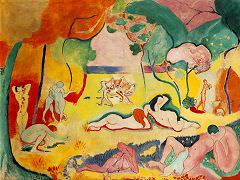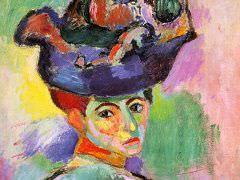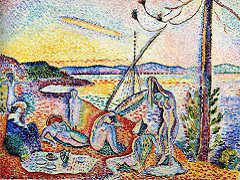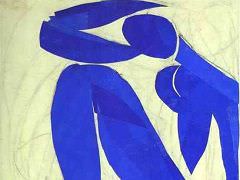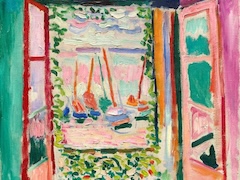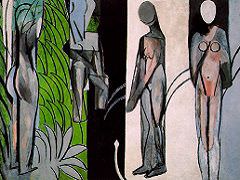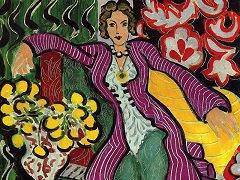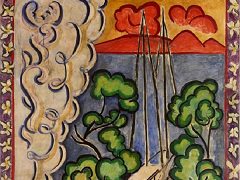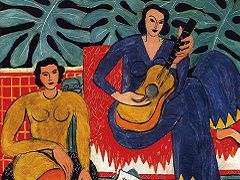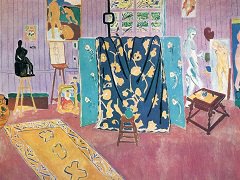Notre Dame, 1900 by Henri Matisse

As early as 1895 Matisse occupied a studio on the Quai Saint-Michel, overlooking the Cite, the parvis of Notre-Dame, the quais, bridges, and surrounding buildings. He does not seem to have painted the scene from his window for some time, but beginning about 1900 (or perhaps a bit before) he frequently did so, focusing alternately on the facade of Notre-Dame and on the Pont Saint-Michel. These pictures have never been studied as a series, and strictly speaking they are not a series of variations in the same sense as Monet's variants on the facade of Rouen Cathedral (1893-94). Instead, they were painted over a number of years, at a time when the artist's interests were also occupied with other, ultimately more important subjects. However, beginning with this group of cityscapes we are on the threshold of an Indian summer of Impressionism that did not culminate until the Fauve movement burned itself out about 1906 in Matisse's studies for Joy of Life and such parallel works as Derain's studies of the London embankments or his dazzling Coucher de soleil of 1905-6 (Saint-Tropez). Matisse continued to explore the theme of Notre-Dame as late as 1914, when he put aside a fascinating yet aborted effort at an almost entirely blue, constructivist view of the subject (a picture that has been repeatedly exhibited in recent years: Los Angeles, London, Paris), where he remained indecisive concerning the scale of the cathedral within the frame of the picture.
Most of Matisse's views of Notre-Dame date from the early years of the century, and the Tate Gallery version here must be one of the earliest. As in most of these views, the bulk of the cathedral does not loom especially large, and the emphasis is on providing a suggestion of the space formed by the historic monument and its surroundings: indifferent modern edifices, the connecting surfaces of the bridges and quais, the confined channel of the Seine, and sometimes but not invariably a passing barge. It must be as clear to connoisseurs of Gothic architecture as to those of modern painting why the facade of Notre-Dame de Paris, rather dryly restored by Viollet-le-Duc, did not absorb Matisse's interest in the way that that of Notre-Dame de Rouen captivated Monet. Hence, while the colors are often startling in Matisse's Notre-Dame series, the oblique compositional angle, traditional space-forming devices, and atmospheric effect evoke early rather than late Impressionism, in spite of the intense, novel hues.

